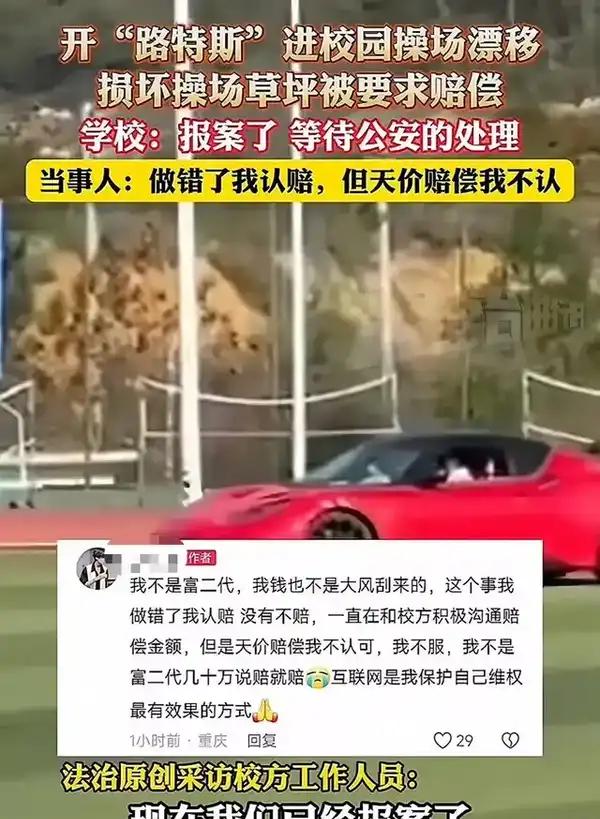Sports Field Drifting Incident Sparks Compensation Debate
A young man drove a sports car onto a university field in Guizhou, China for drifting, causing damage. The school demanded compensation of several hundred thousand yuan, leading to public discussion about appropriate penalties.

In December 2024, an unusual incident at Zunyi Medical University in Guizhou Province, China captured public attention. A 19-year-old man drove a red Lotus Evora sports car onto the school’s athletic field to perform drifting maneuvers, causing significant damage to the turf.
The incident began when the driver entered campus with a student to visit the cafeteria. After eating, rather than leaving immediately, he decided to take his vehicle onto the athletic field, where he performed drifting stunts. The damage affected 13 separate areas, covering roughly half a soccer field’s worth of turf.
The university initially demanded compensation in the range of 500,000 yuan (approximately $70,000 USD), citing the specialized nature of the athletic field turf and underlying drainage system. This sparked heated debate about whether the amount was justified.
Professional turf experts note that athletic field surfaces are far more complex and expensive than ordinary landscaping grass. A proper sports field requires specialized grass varieties, sophisticated drainage layers, and precise leveling to meet competition standards. The damage went beyond surface-level issues, potentially compromising the field’s structural integrity and drainage capabilities.
The driver, who owned a second-hand Lotus worth around 200,000 yuan ($28,000 USD), claimed the damage was minimal, describing it as “palm-sized.” However, video evidence showed multiple tire tracks cutting across the field. He took to social media to protest the compensation amount, arguing it was excessive.
The matter eventually attracted police attention, as intentional damage to public property valued over 5,000 yuan constitutes a criminal offense under Chinese law. The case has evolved from a simple compensation issue into a potential criminal matter, with both civil damages and punitive consequences at stake.
The incident raises broader questions about campus security, responsibility for public property, and appropriate penalties for intentional damage to specialized athletic facilities. The final resolution will likely set a precedent for similar cases, balancing fair compensation with deterrent effect.